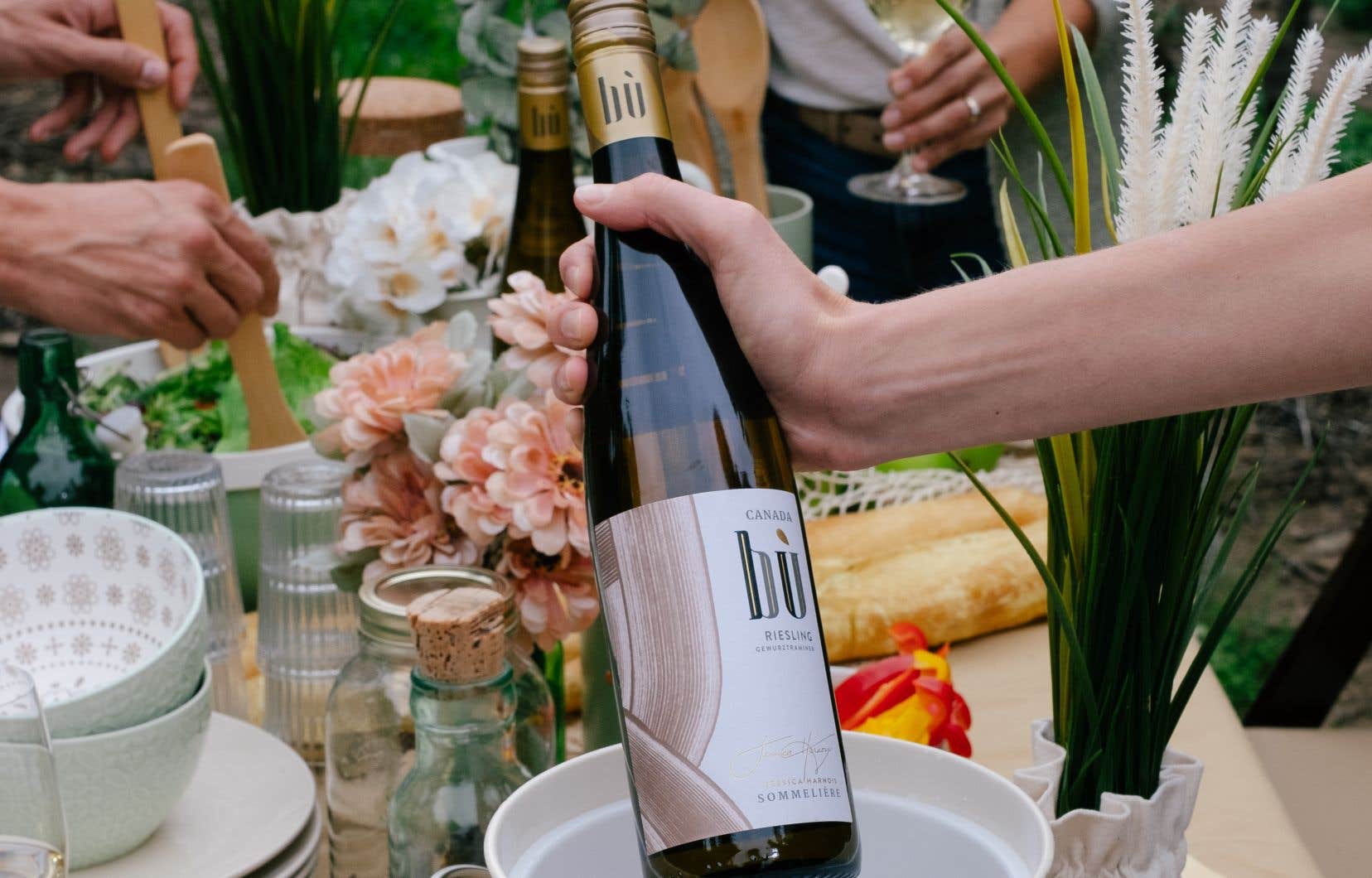This text is part of the special book Plaisirs
Even though we buy millions of bottles of wine each year in grocery stores and convenience stores, many of us still consider them second-rate choices compared to those offered in SAQs. How is this contradiction explained? Why do we have stubborn prejudices about these wines, which have nevertheless improved a lot in quality, and how do we get rid of them?
Wines have been part of the decor of Quebec retailers for over 40 years. Over the decades, brands such as L’Oiseau bleu, Cuvée Madame, Cuvée des Patriotes, Charlesbourg, Sillery and Baby Duck, offered as bottles or viniers, have been very popular… but they have also contributed to the negative image that we have built of it, with often unflattering comparisons.
Now let’s propel ourselves into 2023. According to a Léger survey conducted last year, 57% of Quebecers buy wine in grocery stores and convenience stores, for purchases totaling $635 million annually. Not bad, for products that still have bad press. It must be said that the wine industry in grocery stores has evolved a lot. There are now reds, whites, rosés, sparkling wines, sweet wines. They come from the Old World, the United States, South America, Australia. They are also, increasingly, organic and monovarietal.
“These are no longer piquettes”, confirms sommelier and entrepreneur Jessica Harnois, who for seven years has helped to change mentalities with her range of Bù wines, which today includes a dozen everyday products that sell for more than three million bottles a year. “There is good and bad everywhere, of course, she adds, but I would say that blindly, between a wine bought at the grocery store and a wine from the SAQ for less than 20 dollars, people no longer make a difference. »
Demystify trading
According to Jessica Harnois, the idea that less value is attributed to wines purchased at the grocery store than at the SAQ is often due to the fact that Quebecers do not have a clear understanding of what trading is. The latter is based on the purchase and bottling of wines outside their place of production, rather than at the winegrower. In the case of Bù, like the other labels presented in our grocery stores and convenience stores, these wines transit to Quebec in sealed containers and are bottled right here.
“That doesn’t take away any value from them, quite the contrary,” says the sommelier, who recalls that 80% of the wines in the world are not bottled at the producers… and that 36% of the wines sold in Quebec, including those offered to the SAQ, follow this process!
“There are actually a lot of benefits associated with trading,” she explains. Better prices at equal value for customers, many more points of sale (800 SAQ, compared to 8,500 retailers across Quebec), less greenhouse gas emissions for transport, the use of lighter glass and recyclable for bottling, the quality seal of the SAQ laboratories. For my part, an A to Z control of my products, since I test the contents of each container before its transport and upon its arrival in Montreal. »
This is why Jessica Harnois, who happily bought wine in grocery stores when she lived abroad — she lived in 25 different countries for 10 years — did not hesitate to go into grocery stores and convenience stores in Quebec. in 2014. “I was told that it was going to harm my credibility and that people wouldn’t tell the difference between my wines and a sangria. But I had confidence in Quebecers, whom I know to be curious, greedy and informed, and I was right! »
The power of mental associations
Like Jessica Harnois, the director of Concordia University’s Center for Sensory Studies, Jordan Lebel, who was also a graduate of the ITHQ and chef for several restaurants, believes that the quality of wines in grocery stores and convenience stores in Quebec has clearly improved. He therefore attributes the prejudices that affect them to mental factors, in particular because of their place of sale.
To support his argument, he bases himself on the work of researchers: “Herbert L. Meiselman showed in 2000 that by serving the same meal on a tray in a university cafeteria and on the dishes of a restaurant, the satisfaction of customers ranged from poor to excellent. Charles Spence, for his part, proved that hot chocolate does not taste the same if it is served in different colored cups, just like wine tasted against the backdrop of music by Mozart or Wagner. »
This perception, which means that one sense influences another, synesthesia, is reflected according to Jordan Lebel in our relationship to wines in grocery stores. For what ? Because grocery stores and convenience stores are seen as local businesses, unlike SAQs, which represent destinations. “The decision-making path is not the same,” he explains. Retailers are seen as routine places, where the purchase of wine can be impulsive and the product consumed within two hours. While at the SAQ, we take the time to look and learn, even for wines of equal quality. »
However, the specialist believes that within five years, and promotional efforts similar to those made for microbrewery beers and ciders, the negative idea that we still have of wines in grocery stores should disappear. “Personalities like Jessica Harnois and Stefano Faita, sympathetic and highly visible in the media, help to democratize these wines. But I also believe that by creating a real space for them in stores, with more elegant shelves and floors, a storytelling more worked and, why not, virtual advisors in this space, our perception will be very different, ”he bets.
Four grocery store wine suggestions
This special content was produced by the Special Publications team of the Duty, relating to marketing. The drafting of Duty did not take part.
